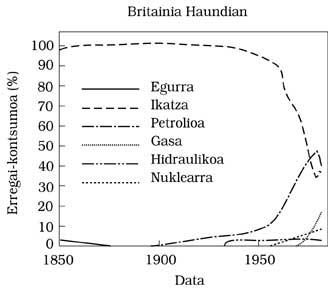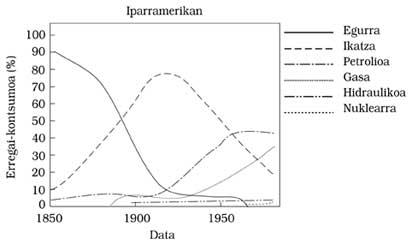Energy sources of the future
The energy crisis has been one of the magic phrases used by politicians and economists in the last twenty years. Moreover, the crisis has been regarded as the source and cause of most of the evils of our advanced societies. In any case, the term crisis has been hidden in recent times. It is a concept that has been used a little less and that has been used in other contexts and social levels. However, in 1973 the deepest reasons, such as the great dependence on a single source of energy, seriously put the economic structure of social workers.
If you ask the general public what caused the 1973 energy crisis, probably the most widespread response was the alleged rise in oil prices. However, the rise in opep-driven oil prices was a trigger for the crisis. Other deeper causes caused the energy crisis.
In addition, these factors are not conjunctural but structural. And among these basic causes there is an excessive dependence on a single source of energy, I think the most important.

However, this error is not exclusive to our technological society. Throughout human history it has always happened this way. If we look at history, this dependence is evident.
In human history, wood has been the main and usual source of energy over thousands of years. About XVII from primitive humans. Until the end of the 20th century, wood has been the only source of energy to cook food, heat houses or supply the industry. The force of animals and windmills and water developed two or three thousand years ago have played a secondary role 1.
XVIII. After the invention of the steam engine in the 19th century, coal became increasingly important, especially in the industrial field. In advanced Western societies coal acquired all its primacy in the 19th century. 2 by the end of the century.
Dependence on oil is new and in advanced Western societies and at the beginning of this century oil began to prevail 3. In this brief review of history we have seen that the dependence of a single source of energy has been almost total. Therefore, it is no wonder that when the availability of one of these energy sources changes, society gets into a critical situation.
The dependence is clearly explained if we analyze the distribution of energy supply in Spain (data from 1986).
| PERCENTAGE | Energy source |
| oil hydroelectricity nuclear natural gas |
Therefore, any oil incident has a great impact on the state of energy availability in Spain.
On the other hand, the 1973 oil crisis was of great value because it revealed three main and relevant points:
- Oil (fossil fuels in general) is not eternal. We are using the energy capital accumulated on Earth for millions of years.
- Strong energy waste.
- Need for alternative energy sources.

According to the data we have today, if we continue to consume oil to the present extent, the reserves and resources known for the middle of the next century will be exhausted. The reserves we know are sufficient to ensure consumption close to 30 years and resources can extend this period 4.
Consequently, oil will be increasingly appreciated and expensive, although for example, current prices are cheaper than those of ten years ago. In addition, oil is the origin of many raw materials used in a chemical industry that makes the status of advanced societies possible. Petroleum derivatives are the basis of many plastics, insecticides, medicines and chemicals. So burning oil can be a luxury too big in the future.
Coal reserves are larger than oil reserves and can last another three hundred years. Coal and its derivatives can largely replace oil (also for obtaining raw materials from the chemical industry), but this substitution will increase coal consumption and reduce the duration of reserves.
On the other hand, it cannot be denied that the energy crisis has brought about a reduction in energy waste. To do the same process, less energy is now consumed than fifteen years ago. The most representative example can be the car. In the early 1970s a normal car consumed between 10 and 12 liters of gasoline per hundred kilometers. At present, this figure is considered an unacceptable barbarity. The maximum allowable consumption is about seven liters per hundred kilometers.

Before we talk about the energy sources of the future we must make a very important observation. Among us, when we talk about energy crisis, we always think of the oil crisis, which, as in other cases, is a very Eurocentrist vision 5. The energy crisis has another side for the majority of the world's population. 2 billion people in the world, most of the Third World, use wood as a source of energy to cook food and for them the shortage of wood has caused the energy crisis.
1.5 billion Third World people have great difficulty getting the wood they need every day to cook food or heat their home. In addition, the forest is under heavy pressure, increasing all the ecological consequences that this can lead to. A Third World person only needs 3.5 kilos of wood a day (a few sticks). However, the rate of spill of trees is higher than the rate of growth. Many Third World Peoples are currently burning resources for their future.
Energy of the future
When talking about the energy of the future, perhaps the first question to be answered is: What is the basic strategy of the future energy policy?
I believe that this energy strategy must follow five axes: diversification, innovation, savings, cleanliness and local.
Diversification.
If something has highlighted the energy crisis of 1973, society cannot rely on a single source of energy. The future energy policy should consider all energy sources and integrate them into a proper network. Thus, if one fails, society would not fail.

Renewable.
Energy sources will preferably be used within a reasonable time or will never be exhausted. This does not mean that non-renewable energy cannot be used in the medium term, especially when a transition interval is undeniable. It is clear that still oil, coal and fission nuclear power will have a lot of weight.
Savings.
Energy is a precious resource that cannot be wasted. Therefore, the systems of production, transport and use of energy must be optimized to the maximum in order to avoid energy waste. For example, in the 1960s television sets consumed hundreds of watts, the current ones needed 90 watts and those of liquid crystal to be published in the middle of this decade only consumed 5 watts.
Cleaning.
Future energy sources must minimize environmental impacts. This is an inescapable condition. Ecological disasters so far, such as the greenhouse effect and acid rain, will be unacceptable in the future.
Local.
The future energy supply strategy cannot remain alone in global responses and must adapt to local characteristics. It is meant that it is appropriate to pose solar energy as an important source of energy in the warm regions of the world, but in cold countries it will have a secondary or tertiary role.
Within this locality I also want to highlight the importance of small energy supply schemes. In fact, a hydroelectric energy scheme, for example in local sugars, may in some cases be more appropriate than that based on a single large dam.
Immersed in the essence of the energy sources of the future, the following scheme indicates what those energy sources will be.
Renewable energy- Bioenergy
- Natural energies
- Other
Non-renewable energy- Fossil energies
- Nuclear energy
|
Let's analyze them one by one.
- The oil crisis has not been the only energy crisis in history, and for example, there was a serious economic crisis in the 18th century. At the beginning of the century Britain due to the shortage of wood and charcoal.
- XIX. At the end of the 20th century 90% of Britain's energy supply came from coal.
- It should be noted that switching from one energy source to another has not occurred abruptly and in all places simultaneously. Local factors such as the abundance of a given energy source influence substitution. The slow substitution of coals in Britain is very normal if we take into account the large reserves of coal in this country. If we came to Euskal Herria, until the beginning of this century the coal did not replace the charcoal in blacksmiths.
- It is important to note that reserves are what we know and resources are what is believed.
- Eurocentrism means a developed Western society.





